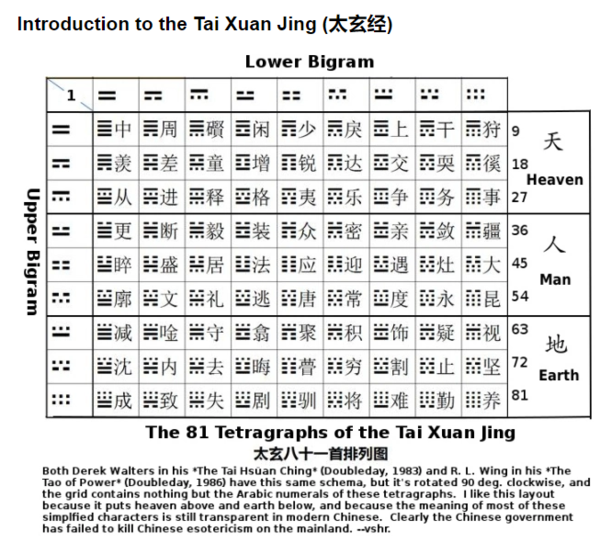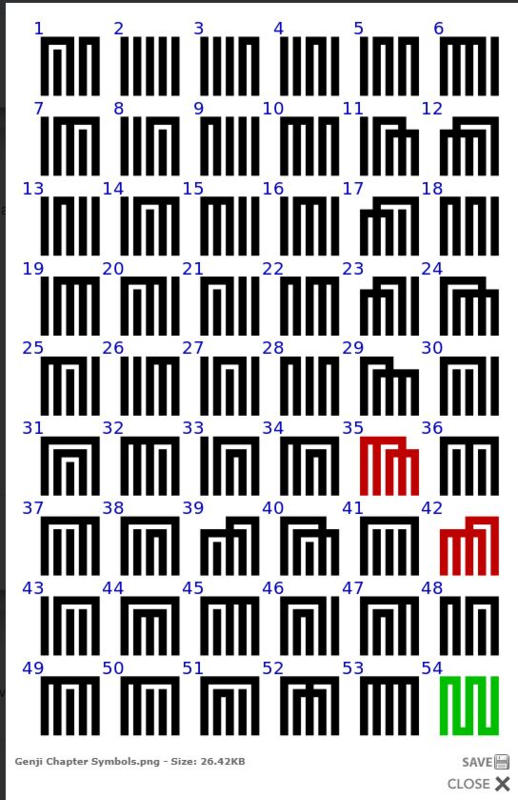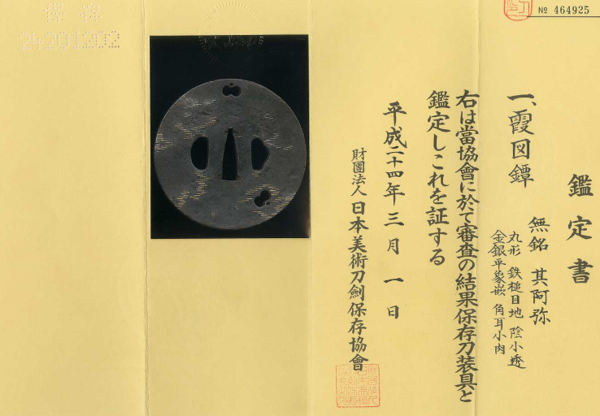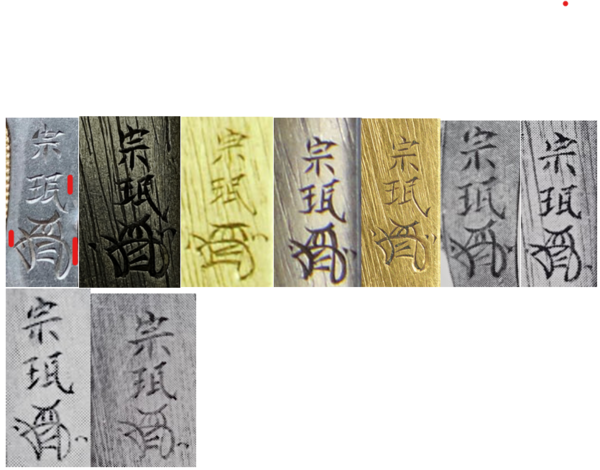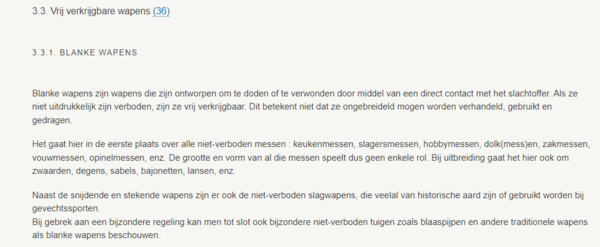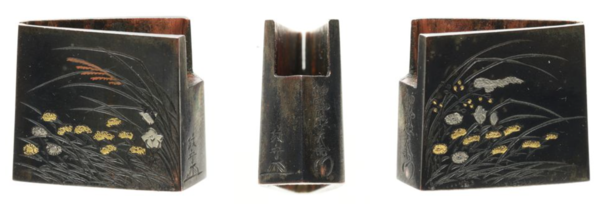-
Posts
1,103 -
Joined
-
Last visited
-
Days Won
5
Content Type
Profiles
Forums
Events
Store
Downloads
Gallery
Everything posted by DirkO
-
I just want to add that @GeorgeLuucas is approaching this in a very good manner - a learning exercise. Other people might disregard anything that doesn't fit their own conclusions, he's keeping an open mind. Social media, search engines, .... are geared nowadays to show you results or news along the lines of your interests. They will enforce your existing ideas and filter out anything with a critical note. People will eat it up as the comfortfood it is. It's something that most people aren't aware of.
-
With all respect to the OP - but this is a cast tsuba. The surface of the tsuba is showing small pitting, the lines and carving are far too evenly soft. But the thing that convinces me the most is the seppa-dai area and how it was worked. The tagane-ato punchmarks are not well-defined and too soft. Please compare this to other papered and known examples, they will not show these features.
-

NHK - History Uncovered: Muramasa - Cursed Blade
DirkO replied to DirkO's topic in General Nihonto Related Discussion
To be honest - as far as I know he's a very modest and humble man. Your remark seems to hint at some earlier unresolved issue? If so, I propose you take it up with him. Seeing this film is relevant to our collecting area, I put it up here. -
Another one that wasn't posted on NMB - last one for now, I promise! It goes more into depth of the Muramasa legend. Again, narrated in English - a bit dramatized, but this keeps it low threshold for the general public and there are a few nice bits of information for collectors as well. A Cursed Blade
-
Last time I got outbid for #1 at ¥30,000 or there about... The earlier ones are quite difficult to get.
-
Tokubetsu Jūyō books 2-10 - these are dirt cheap - I already have all these, but really, someone should pounce on them!
-
https://www.nihontoc...hinshi_Masahide.html Suishinsi Masahide actually did some testing on this, albeit more towards hamon.
-
@Dan tsuba great find! it put me on the way of something else - seeing yours have 6 lines, but apparently it relates to an older system with 4 lines, which most tsuba have with this design:
-
I'll argue with Torigoye then (not really seeing his strong point was iron tsuba) These are the chapter symbols for the Tale of Genji.
-
It's a nice tsuba, but that name (石黒改時) doesn't appear in the Toso Kinko. Now that can happen, seeing it will be a later lesser master, however, there's a comprehensive school genealogy in the book "The Ishiguro school of Japanese sword fittings artists" and there's no Masatoki there either? This makes me think either the 'Ishiguro' part of the mei got added later, or it was a legitimate maker called Masatoki - 改時 who made a piece in the style of Ishiguro and signed it as such. Also the Kanji for Masa 改 is not the one used for the Masa's in Ishiguro, there it's 政. This is strange, seeing that 1 kanji is usually handed down to students to show their lineage. eg. for Ishiguro 政常 - Masatsune -> 政美 - Masayoshi -> 是美 - Koreyoshi
-
The origins of the Kiami School are rather obscure and authorities, when they mention it at all, seem to differ over the details. The consensus, however, appears to be that their origins lie in the Province of Aki in the south of Honshu and Wakayama even records a tsuba signed Hiroshima ju Kiami, Hiroshima being the capital of Aki Province. Haynes (catalogue no.7, lot 67) states that the school, which he chooses to call Goami, originated with a certain swordsmith called Kai Masanaga who worked in the Hiroshima area and one day "added tsuba making to his art as a sword smith'". Joly, however, in the Naunton catalogue states "The first Kiami, Kanenobu, worked in Aki and is said to have been the second Hoan, but it is probable that Kanenobu was the traditional name (torina) of the family as there are great differences in age, style and technique in the pieces signed Kanenobu." This latter point is particularly valid since, as Joly also mentions, there appear to be three quite distinct groups of work which have come down to us today bearing the name Kiami. The first group is signified by the use of a Tembo-style hot-punched design of mon, calligraphic characters and even flowers. The rather thick iron from which this type of tsuba was made has a slightly coarse grain to it and often nunome work in gold and silver has been used to embellish it. Whilst the nunome work is reminiscent of Shoami decoration, Haynes comments that the kokuin or stamped decoration is usually far superior to that produced by the Tembo. There are some relatively plain, sukashi decorated tsuba that have been given to the Kiami School in the past and Joly illustrates one in Naunton, as no.1127. It is this group that Torigoe refers to in Tsuba Geijutsuko as being "in the Choshu manner". The last group, characterised by openwork with nunome zogan decoration, is much more in the tradition of some of the Shoami workers, particularly the Awa Shoami whose elaborate use of nunome reaches a peak in the Kenjo or presentation pieces, reputedly made as gifts to be presented to the Shogun by the provincial Daimyos on their semi-annual arrival in the capital. The Kiami pieces are even more decorative as their makers would make excellent use of ke-bori and relief technique which would be used to both emphasise and to counter-balance the abundant nunome. Extract from "Tosogu - Treasure of the Samurai"
-
Just to clarify - it's not mine! I just keep quite a few tosogu/nihonto on file so I can use them as information source if ever needed. The one I posted was sold in 2019.
-
I have this one on file - hope it helps! Additionally - there seems to be some nice info here (easy enough to translate with Google translate) https://www.librirar...6%E9%98%BF%E5%BC%A5/
-
I've seen the Yahoo! Auction where this pair of tsuba sold. A few things: - the seller has a good reputation, regularly also sells papered items - seeing YJP is one of the biggest Japanese auction sites for this kind of thing, chances are zero this would pass by unnoticed by big Japanese and international collectors. Sometimes you see bidwars going well into the 10,000's USD. - unpapered items will require you to do your homework. Big names even more so. The bigger the name the greater the risk. The signature should confirm the work. Now the work has been discussed at length here, so let's focus on the signature. In your mei you'll see some oddities I couldn't confirm on any of the papered reference mei I have (or published in Wakayama): - at the 2nd kanji on the right you have 2 parallel lines, however in all other mei the top-stroke is right of the one below it and far more stylised. - the kao itself is missing strokes to the left and to the right, again present on all reference mei. Probably there are more differences that I haven't picked up on yet. The differences in mei cast serious doubt. The fact that a papered Somin kozuka will sell for 7 times the price than this pair of tsuba went for is another red flag. Why wouldn't the seller try for papers, knowing that a papered tsuba would fetch him probably 10x more than what it did now? It doesn't add up. I hope you can still appreciate it for what it is - being a very nice tsuba.
-

Reasons why swords cannot be imported in Belgium
DirkO replied to Yves's topic in General Nihonto Related Discussion
@Yves I'm sorry, but you're wrong - your links actually confirm what I said. If you read the circular that's mentioned in your link, you'll notice that all edged weapons are excempt unless specified otherwise. And again - edged weapons +100 years old aren't even considered as weapons, but collectables in Belgium. The law (that still needs to be voted by the way) you mention is focussed on firearms. This because criminals have been known to reactivate old deactivated firearms. -

Reasons why swords cannot be imported in Belgium
DirkO replied to Yves's topic in General Nihonto Related Discussion
If over 100 years old, they're not considered weapons and you can import them. Just make sure the seller shipping them to you clearly states this. I've imported from Japan after the date you mentioned without any issue. -
In one of the excellent descriptions on https://tsuba.info/home/ member @paul tsubadotinfo wrote the following: Obviously this is tongue in cheek, one isn't better than the other (so put away the torches and pitchforks already!). There are also already several topics about this - however I wonder how things are perceived from a Japanese collector point of view? Do they hold old iron above anything else? I'm not trying to spark the Western discussion, just gain some insights on the Japanese side of things.
-
- 3
-

-

-
Hi Bryce - what makes you so confident? I'm not asking this in a mean way - just want to see what features in the mei you use for defining them as Sadakatsu. I have literally 100+ of Sadakazu/Sadakatsu mei on file (not including my library) and I might be able to help out with examples.
-
-
I vividly remember seeing this in Utrecht at the Samurai Art Fair in 2018 - absolute masterpiece! Seeing it was in a display case, I never got to see the backside, so very happy with these pics. I mean the collar, how the hands are perfectly rendered in their position, the scissors,... The different materials and how their constrast is used to draw just enough attention to all the areas to create a exquisite dynamic. One can only stop and admire. A real eye catcher! I remember Bob also having a little Ford Hallam exposé - altough - little? - he actually did bring quite a lot of pieces!
-
Very cheap, and a no risk buy, seeing the scarcity and level of quality. Well done on the buyer and Brian!
-
There is an index for the 8 volume set as well. However I don't know if it's a publicly available one.
-
Thanks for these Arnaud - they'll make a nice little trip down history - to see how collectors back then perceived everything.




